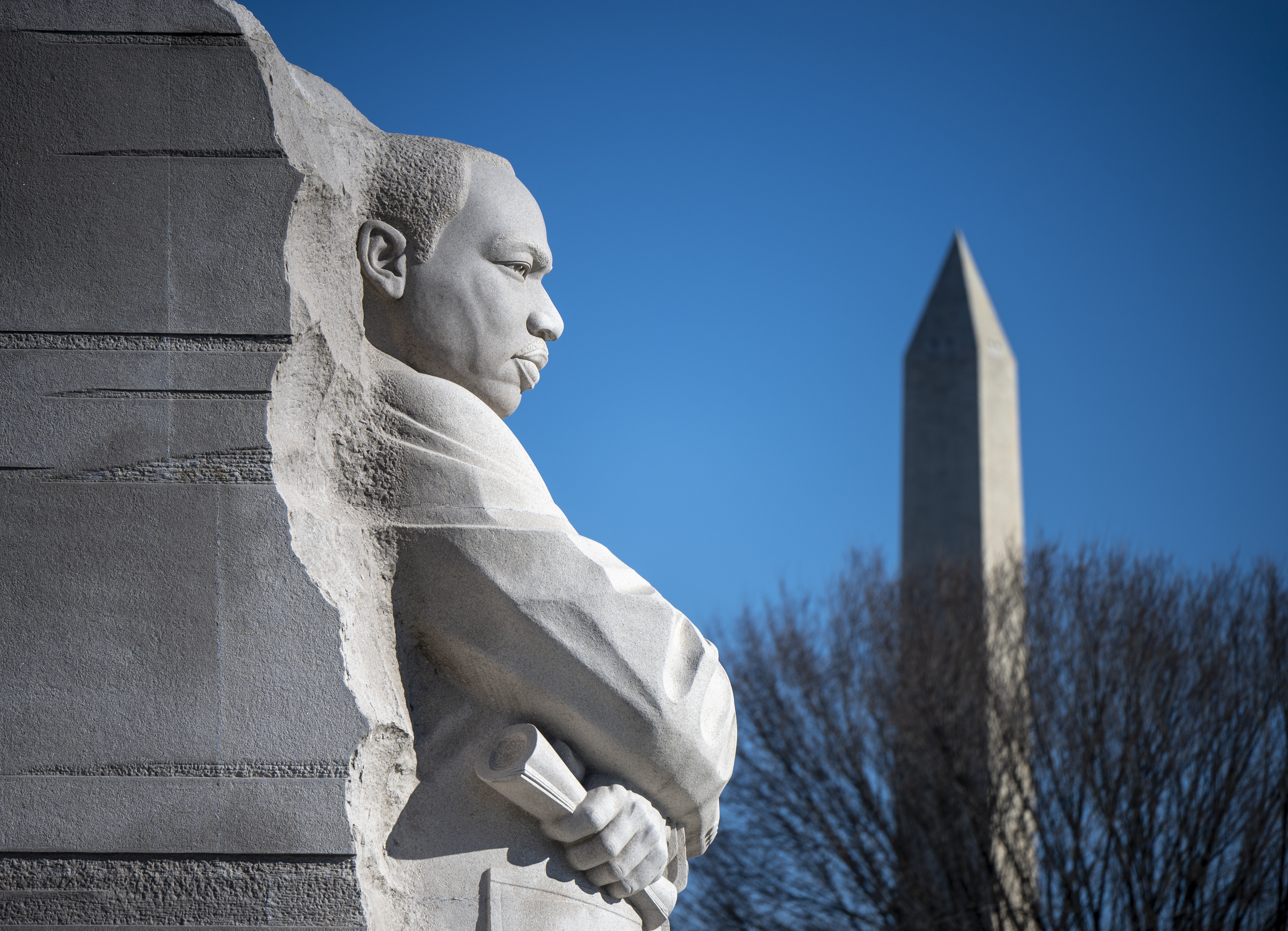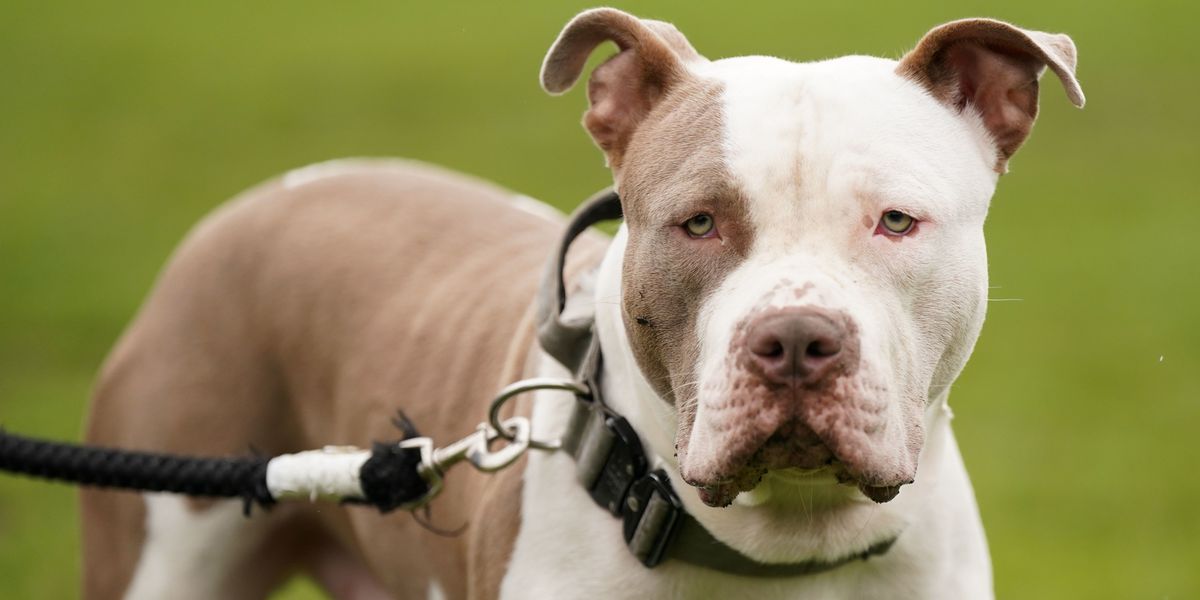
Sign up for our free Health Check email to receive exclusive analysis on the week in health
Get our free Health Check email
Get our free Health Check email
I would like to be emailed about offers, events and updates from The Independent. Read our privacy policy
New research is revealing the remarkable story of one of Britain’s most enigmatic archaeological finds - a Roman gladiator helmet, discovered buried in a field in East Anglia.
The artefact, which will feature in a major British Museum travelling exhibition on gladiators in Britain, being launched later in January, was found by a farmer out ploughing his land near the village of Hawkedon, Essex, back in 1965 - but it's only now that scientists and historians have begun investigating it in detail.
Their new findings are of international importance - and suggest that the gladiatorial troop associated with the helmet may have come from the southern Italian area where gladiatorial spectacles first originated and where the world's most famous gladiator, Spartacus, staged his revolt against Rome.
Their research is beginning to suggest that the gladiator who originally wore the helmet, may also have played an interesting role in the Roman conquest of Britain or its aftermath.
A metallurgical analysis of the metal used to make the helmet has, for the first time, revealed that it was probably made in Italy sometime in the 1st century AD.
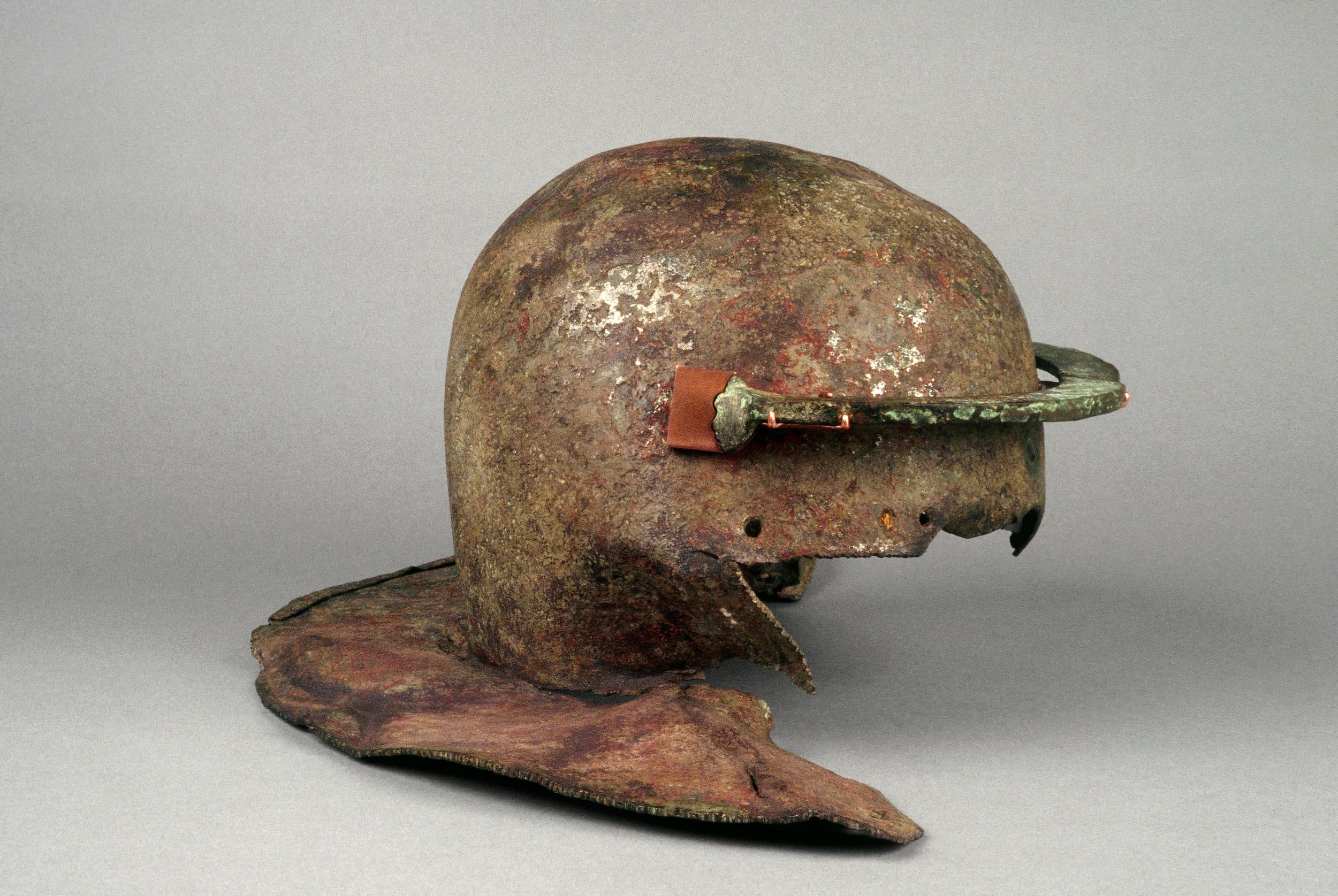
It's likely therefore that the gladiator who wore it was part of a gladiatorial troop that was brought to Britain during the Roman conquest of 43 AD or in the one or two subsequent decades. The helmet was made from an unusually high quality form of brass (made of extremely pure copper and the purist zinc carbonate with small amounts of tin and lead).
The analysis, carried out by scientist Dr Peter Bray of the University of Reading, has revealed that, unusually, there was a complete absence of the impurities one would normally see in most other brass artefacts.
The high level of purity would have made the helmet shine like gold. The sourcing of the metals, required to make that sort of ultra-high-quality brass, suggests that the person who commissioned or oversaw the manufacture of the helmet was extremely wealthy, had access to rare ultra-pure metals and almost certainly had very high status and powerful contacts and sources.
In early Roman Britain, the key individuals who were most likely to have troops of gladiators, were the provincial governor and all or some of the four commanders of the four Roman legions based in Britain. They would all have been members of the Roman Senate (the empire's ‘parliament’ in Rome) - and would have been very wealthy and well-connected.
New research, by an Oxford academic, into a stamped maker’s inscription on the helmet suggests that it was probably made in or near the doomed city of Pompeii – the very area which was the original birthplace of large-scale gladiatorial displays and where the ancient world's most famous gladiator, Spartacus, was based.
Investigations by Latin inscriptions specialist, Dr Roger Tomlin of Wolfson College, Oxford suggest the letters on the stamp are probably identical to those on a gladiator helmet found in the famous gladiatorial barracks in Pompeii itself (buried in the eruption of Vesuvius in 79 AD).
That Pompeiian helmet is a high status one – a fact that reinforces the elite nature of the owner of the gladiator whose helmet was found in East Anglia.
Remarkably, the letters on the Hawkedon and Pompeii stamps also give a clue as to the name of the mid-1st century master craftsman who probably made or oversaw the making of both helmets. Judging by the letters (an initial - and the first part of his other name), his first name was almost certainly Publius - and his other name was probably either Carus (meaning 'dear') or something like Carminius (possibly meaning 'red' or 'scarlet').
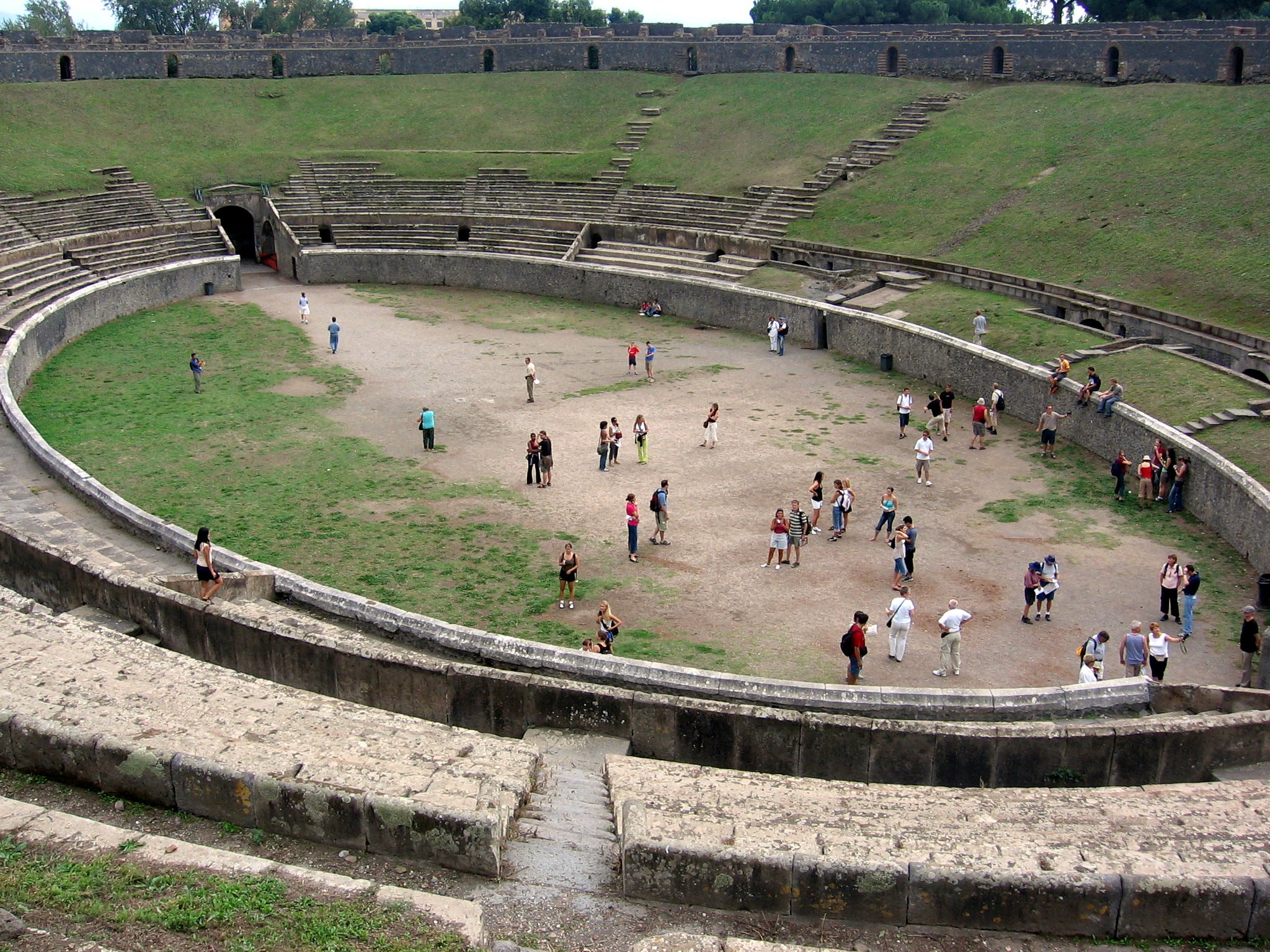
The gladiator and his helmet were probably brought to Britain during the Roman invasion of 43AD or in the one or two decades following that invasion - and it's likely that they would have been deployed during very high status events, potentially the 43 AD Roman victory celebrations in Roman Britain’s first capital, Colchester (following the surrender of the Britons), or at the dedication of Roman Britain's imperial cult temple in around 55 AD (also in Colchester) or at any 60 or 61 AD victory celebration following the Roman defeat of Boudicca’s (Boadicea’s) rebellion.
The new research is demonstrating that the helmet is of substantial historical importance. Recent detailed examination of it has revealed remarkable evidence of the way it was used - and what it represented.
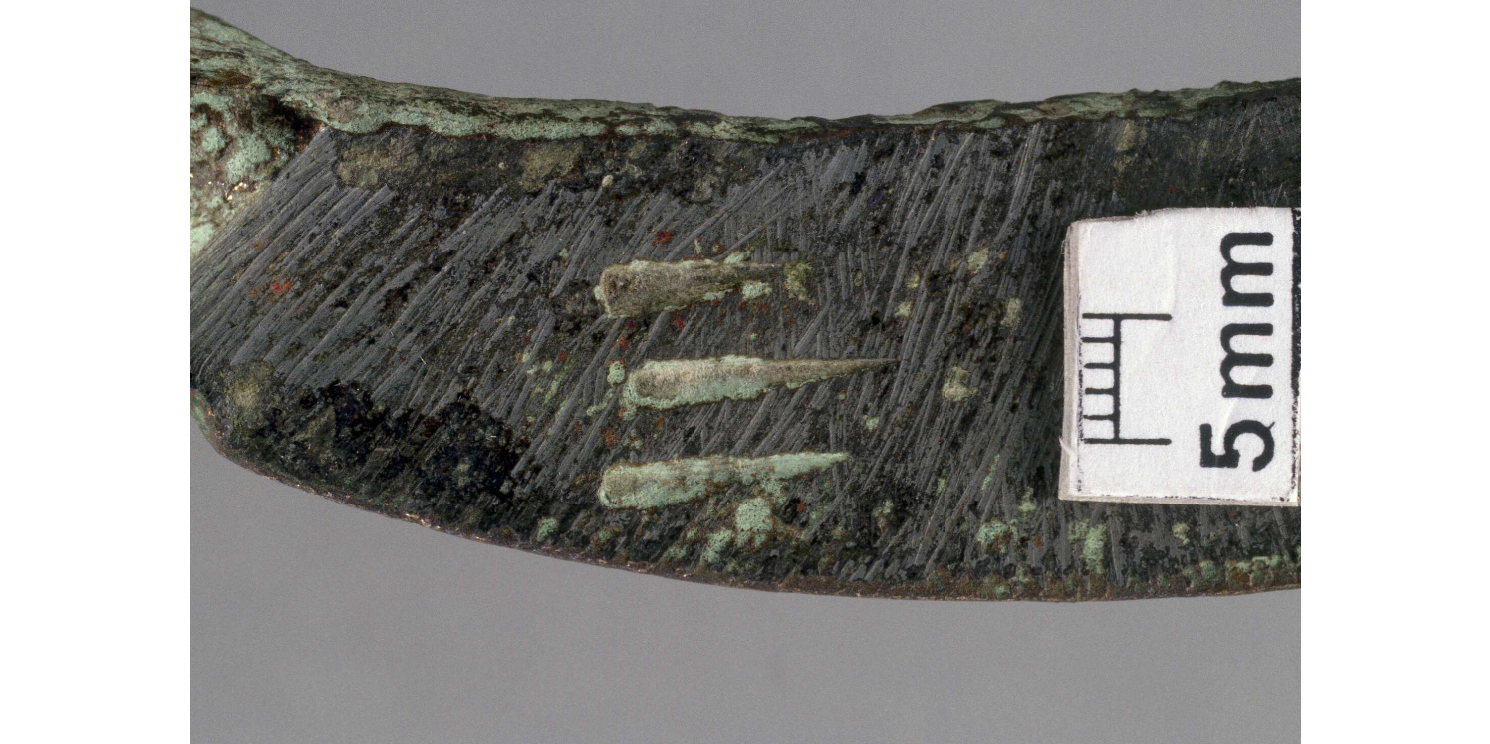
Investigations have identified what appear to be sword impact marks, as seen above, almost certainly sustained during gladiatorial combat. What's more, the gladiator himself seems to have put a series of tiny one-centimetre-long engravings of gladiator swords (the ‘gladii’ from which the term gladiator actually derives) on the brow guard of his helmet, potentially to represent victories or kills.
It's the first time that any probable such tally marks have been identified on gladiator equipment - but worldwide only a few dozen helmets have survived, a tiny percentage given that literally tens of thousands of gladiators entertained the public during the Roman Empire.
The Hawkedon helmet represents one of the Roman world's greatest and most high prestige industries. Throughout the centuries, millions of people watched gladiatorial combat in literally hundreds of amphitheatres throughout the empire. Although most gladiators were slaves, the industry had such an aura of glory that at least seven emperors tried their hand at gladiatorial combat, often watched by vast crowds.
The Hawkedon helmet - and the gladiatorial ethos it represented - was almost certainly worn by a leading 1st century gladiator who would have been watched by senior members of the empire's elite.
During that century, known gladiator fans such as the Emperor Claudius and the future emperor Vespasian visited Britain (both as part of the conquest). Vespasian (whilst commander of a legion during the Roman conquest) is likely to have had his own gladiatorial troop - and, later, when he became emperor, he initiated and oversaw the construction of the Roman world's greatest gladiatorial amphitheatre, the Colosseum.
The empire's political elite used gladiatorial shows to ingratiate themselves with the public and as promotional events to gain advantage over political rivals. So the industry, that the Hawkedon helmet symbolised, was a key part of the political, ideological, economic and social glue that kept the empire together.
But why and how did the helmet end up buried in a field in East Anglia? That is perhaps the biggest enigma associated with this historically so significant artefact.
The evidence shows it was deliberately buried in waterlogged ground (or placed in a small lake) adjacent to a stream, almost certainly as a thanksgiving or other offering to a pagan deity. Such environments were often the most favoured locations for ancient votive gifts to the gods.
But what isn't known is who buried it - but there are two likely candidates: the gladiator himself (after he had retired) in gratitude to the gods for keeping him alive; or native British rebels (potentially associated with Boudicca) who may have looted the helmet (when they sacked Colchester in 60 AD) and then buried it to thank their gods for that victory and to plead for divine help in securing further victories.
The travelling exhibition on gladiators, in which the Hawkedon helmet features, is being organised by the British Museum in partnership with Colchester + Ipswich Museums - and will open in Dorset Museum & Art Gallery in Dorchester, Dorset on Saturday, 25 January (till early May).
The exhibition, which consists of gladiator-related artifacts from all over Britain, will then go on display at Northampton Museum (from May to early September), at the Grosvenor Museum, Chester (from late September to late January next year) and at the Tullie House Museum, Carlisle (from early February, 2026 to April 2026).

 By The Independent (Science) | Created at 2025-01-17 12:40:27 | Updated at 2025-01-17 19:59:18
7 hours ago
By The Independent (Science) | Created at 2025-01-17 12:40:27 | Updated at 2025-01-17 19:59:18
7 hours ago

